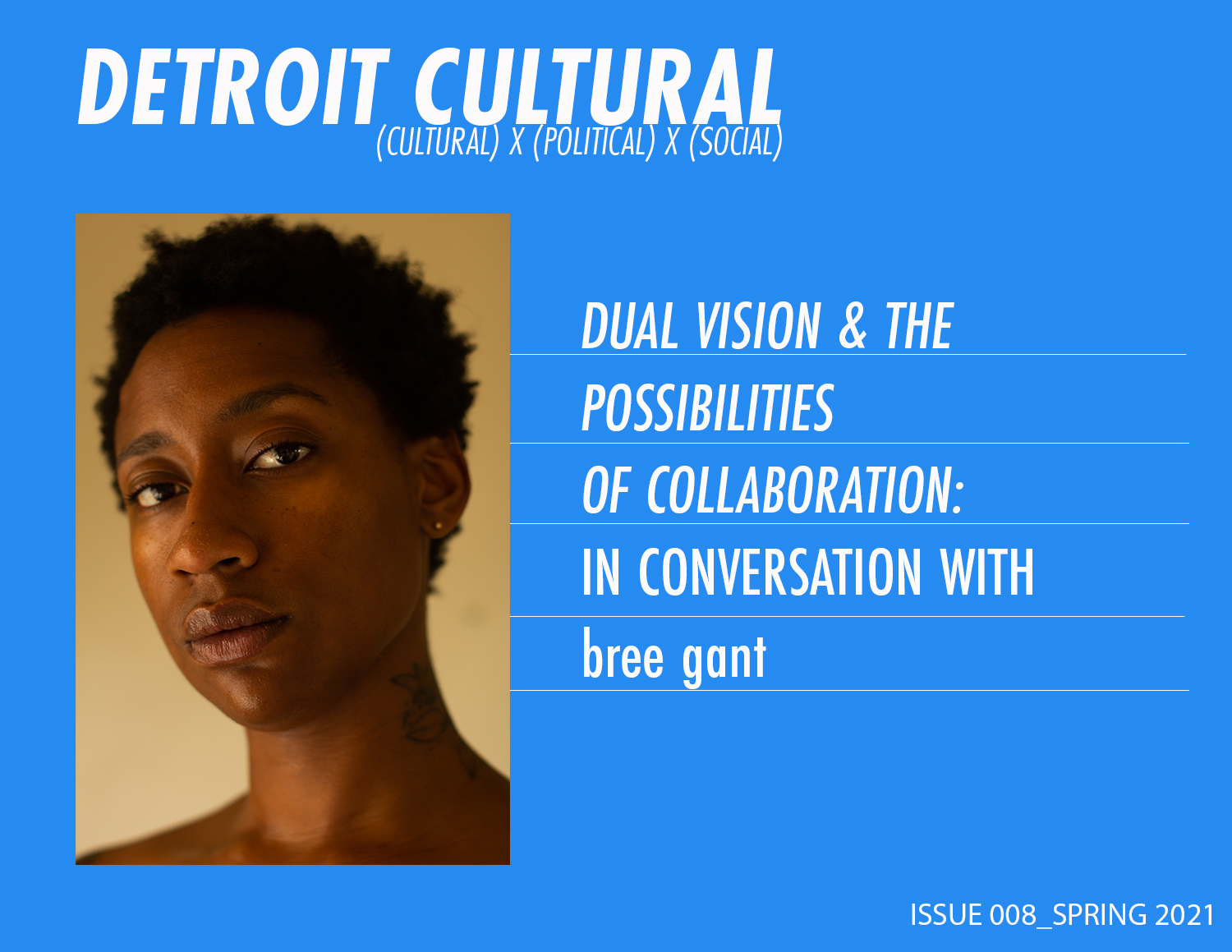bree gant is a multidisciplinary artist from Detroit, MI. Their work includes photography, video, film, dance, writing, installation, and performance. bree uses figure and movement to study relationships among narrative, ritual, and temporality. They are a 2019 Art Matters Fellowship awardee, a 2020 Kresge Arts in Detroit Fellow, and 2021 Artist in Residence with Red Bull Arts. bree is a member of the performance ensemble Visions of the Evolution, and has presented their artwork nationally.
How did you come to work with your specific collaborator? Did you know them before this? Were you familiar with their work?
The DV curators paired us together. When they reached out to me about the exhibit, I was just as excited about working with Cherise as I was about showing at MOCAD for the first time. I met Cherise years ago through a friend who thought we had a similar vibration. She ended up inviting me to perform with her in Visions of the Evolution, and we’ve regularly connected around art and spirit ever since.
Before the actual process of making, what was the process of deciding on what to make like? What was the making process itself like?
We had a series of phone calls about life, practice, liberation and spirit. We found materials and processes where our practices meet, like water, ritual, vessels and altars. We both use found materials and personal artifacts to connect to ancestors and collective energies, so we knew we’d be making some type of altar. We went through several iterations and sketches over a few months before landing at the piece that’s currently showing.
What new possibilities were offered through collaboration that would not have been possible working alone? Did you feel any disadvantages compared to working alone?
What I get most from collaboration is a tangible experience of witnessing and connection; a reminder that the work is bigger than me and I am allowing this energy to flow through me. Witnessing this self awarenss and presence in an other offers me more pathways of connection to my own work. Because Cherise and I are both sort of loners who spend a lot of time taking care and being still, we can move together in a way that holds space for not just solitude, but the needs of both of our practices.
Did working collaboratively provide you with any insights that could be extrapolated and used outside of art in either a personal or political context? Were there lessons learned that could be used in other aspects of life? What did it teach you about democracy?
Every time I get to collaborate with Cherise, my awareness of an innate connection to abundance and community expands. I remember that collaboration doesn’t always require compromise and improvisation doesn’t have to feel chaotic. I believe the personal is political, and making art with Cherise is organizing and movement work.
Going off of the title of the exhibition, how do you and your collaborator see your specific work differently?
We worked from points of intersection and talked more about these overlaps than differences. I think where Cherise speaks to ancestor work and ritual, I sometimes use the language of multiple dimensions and stepping outside of timespace. We are very different artists, but I think our shared passion for magic, care and liberation tends to keep centerstage.
